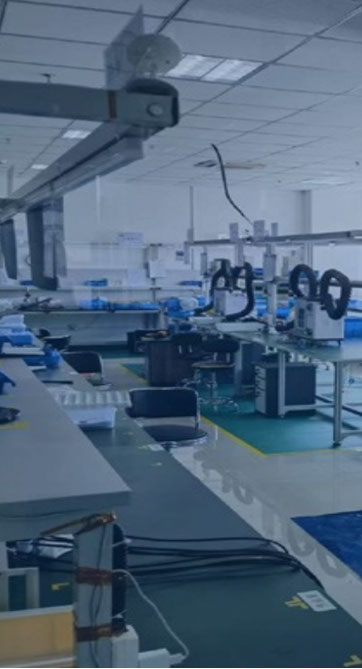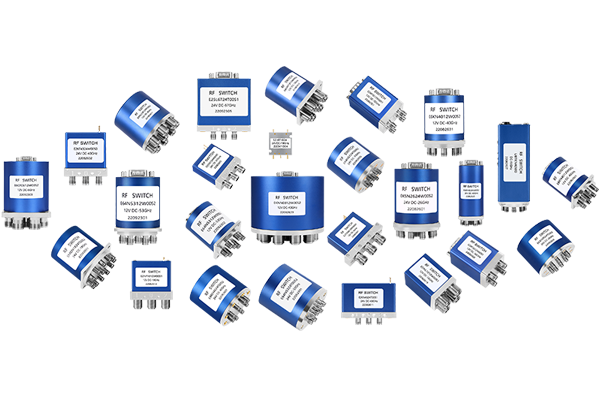
Pin diodes are widely recognized as vital components in RF systems because of their intrinsic functional attributes Their ability to operate with fast state changes and low capacitance while maintaining minimal insertion loss fits them to switching modulation and attenuation tasks. The fundamental operating principle of PIN diode switching rests on adjusting current flow with a control bias. Voltage bias impacts the depletion layer width across the junction and consequently the conduction. By varying the bias level PIN diodes can be reliably switched to operate at high frequencies with low distortion
Where timing precision and control matters PIN diodes get implemented into high-level circuit systems They are implemented in RF filtering schemes to enable selective frequency band passage or blockage. Their robust power handling means they can be used in amplifier power distribution and signal generation roles. Miniaturization and improved efficiency of PIN diodes have extended their usefulness across wireless systems and radar platforms
Performance Considerations for Coaxial Switch Engineering
Coaxial switch engineering is a complex undertaking requiring careful attention to multiple interacting factors Performance depends on which switch style is used the operational frequency and insertion loss performance. Coaxial switch optimization emphasizes low insertion loss combined with high interport isolation
Analyzing performance involves measuring important parameters like return loss insertion loss and port isolation. Metrics are assessed using simulation tools theoretical modeling and laboratory measurements. Careful and accurate evaluation is vital to certify coaxial switch reliability in systems
- Simulations combined with analytic methods and practical experiments are standard for coaxial switch evaluation
- Coaxial switch behavior is sensitive to temperature, impedance mismatch and assembly tolerances
- Innovative trends and recent advances in switch design emphasize metric improvements while lowering size and consumption
Optimizing Low Noise Amplifier Architectures
Maximizing LNA performance efficiency and gain is necessary to secure exceptional signal quality in applications It necessitates thoughtful transistor selection bias configuration and circuit topology planning. A robust LNA layout minimizes noise inputs while maximizing amplification with low distortion. Modeling and simulation tools enable assessment of how transistor choices and biasing alter noise performance. Targeting a small Noise Figure quantifies how well the amplifier keeps the signal intact against intrinsic noise
- Opting for transistors with small inherent noise is a vital design decision
- Optimal proper and suitable bias conditions are necessary to limit noise generation in transistors
- Topology of the circuit strongly affects total noise performance
Using impedance matching noise cancelling structures and feedback control optimizes LNA function
PIN Diode Based RF Switching and Routing

PIN diode switching mechanisms deliver versatile and efficient RF path routing across designs They can be switched very fast to allow flexible dynamic routing of RF signals. Their minimal insertion loss and robust isolation characteristics prevent significant signal degradation. They find use in antenna selection systems duplexers and phased array antennas
Control voltages alter the diode resistance which in turn dictates switching operation. When off or deactivated the diode exhibits high resistance effectively blocking RF energy. When a positive control voltage is applied the diode resistance decreases reduces or falls allowing RF signals to pass
- Moreover PIN diode switches combine quick transitions low consumption and compact form factors
Diverse design options and architectures for PIN diode networks allow implementation of sophisticated routing functions. Connecting several switches allows creation of dynamic matrices that support flexible signal path configurations
Coaxial Microwave Switch Assessment and Efficacy

Extensive testing and evaluation are important to ensure coaxial microwave switches operate optimally in complex systems. Multiple determinants including insertion reflection transmission loss isolation switching speed and operating bandwidth shape performance. A full evaluation process measures these characteristics under various operating environmental and test conditions
- Furthermore moreover additionally the evaluation should consider reliability robustness and durability plus the ability to tolerate harsh environmental stresses
- The end result of a solid evaluation produces essential valuable and critical data to support selection design and improvement of switches for defined applications
Thorough Review of Noise Reduction Methods for LNAs
Low noise amplifier designs are vital to RF wireless systems for amplifying weak signals and controlling noise. The article delivers a wide-ranging examination analysis and overview of methods used to reduce noise in LNAs. We explore investigate and discuss principal noise contributors like thermal shot and flicker noise. We also examine noise matching feedback circuitry and optimal biasing strategies to mitigate noise contributions. It presents recent developments like new semiconductor materials and fresh circuit architectures that lower noise figure. With a complete overview of noise minimization principles and methods the review supports the design of high performance RF systems by researchers and engineers
High Speed Switching Applications for PIN Diodes

They exhibit unique remarkable and exceptional features that render them ideal for high speed switching Low parasitic capacitance and small resistance enable quick switching to handle precise timing requirements. Additionally PIN diodes show a linear adaptive response to voltage facilitating accurate amplitude modulation and switching behavior. The combination of adaptability versatility and flexibility makes them suitable applicable and appropriate across many high speed applications Typical domains include optical communication systems microwave circuitry and signal processing hardware and devices
IC Based Coaxial Switch and Circuit Switching Technologies
IC based coaxial switch technology advances signal routing processing and handling in electronic systems circuits and devices. IC coaxial switch solutions orchestrate control management and directed signal flow through coaxial media while keeping high frequency performance and reduced latency. Miniaturization inherent in IC technology yields compact efficient reliable and robust designs suited for dense interfacing integration and connectivity requirements
- By carefully meticulously and rigorously applying these approaches designers can realize LNAs with outstanding noise performance enabling sensitive reliable electronic systems By carefully meticulously and rigorously applying these approaches designers can realize LNAs with outstanding noise performance enabling sensitive reliable electronic systems By meticulously carefully and rigorously adopting these practices designers can deliver LNAs with excellent noise performance supporting reliable sensitive systems With careful meticulous and rigorous execution of these strategies designers can obtain LNAs low-noise amplifier exhibiting excellent noise performance for sensitive reliable systems
- Application fields encompass telecommunications data communications and wireless networking
- Aerospace defense and industrial automation represent important application areas
- Consumer electronics audio video equipment and test and measurement systems also use IC coaxial switch technology
Design Considerations for LNAs at mmWave Frequencies

Designing LNAs for mmWave bands is challenging because of increased signal loss and pronounced noise contributions. Parasitic elements such as capacitance and inductance dominate performance at mmWave so layout and component selection are critical. Reducing input mismatch and boosting power gain are critical essential and important for LNA functionality at mmWave. Selecting active devices like HEMTs GaAs MESFETs and InP HBTs greatly affects achievable noise figures at these frequencies. Moreover additionally moreover the design implementation and optimization of matching networks is vital to ensure efficient power transfer and impedance match. Package-level parasitics should be considered because they may impair LNA function at mmWave. Implementing low-loss transmission lines along with proper ground plane design is essential necessary and important for reducing reflection and ensuring bandwidth
PIN Diode RF Characterization and Modeling Techniques
PIN diodes are vital components elements and parts used throughout numerous RF switching applications. Precise accurate and comprehensive characterization of these devices is essential to support design development and optimization of reliable high performance circuits. Included are analyses evaluations and examinations of electrical voltage and current characteristics such as resistance impedance and conductance. Frequency response bandwidth tuning traits and switching speed latency response time are part of the characterization
Furthermore moreover additionally accurate model and simulation development for PIN diodes is vital essential and crucial for behavior prediction in RF systems. Different numerous and various modeling strategies are available including lumped element distributed element and SPICE models. The selection of an apt model simulation or representation relies on particular application requirements and the expected required desired accuracy
Advanced Cutting Edge Sophisticated Techniques for Low Noise Quiet Minimal Noise Amplifier Design
Engineering LNAs demands careful topology and component decisions to achieve superior noise performance. Recent semiconductor breakthroughs and emerging technologies enable innovative groundbreaking sophisticated noise reduction design techniques.
Some of the techniques include using implementing and employing wideband matching networks selecting low noise transistors with high intrinsic gain and optimizing biasing schemes strategies or approaches. Furthermore advanced packaging and thermal control strategies play an essential role in lowering external noise contributions. By rigorously meticulously and carefully implementing these techniques practitioners can achieve LNAs with remarkable noise performance for sensitive reliable electronics
